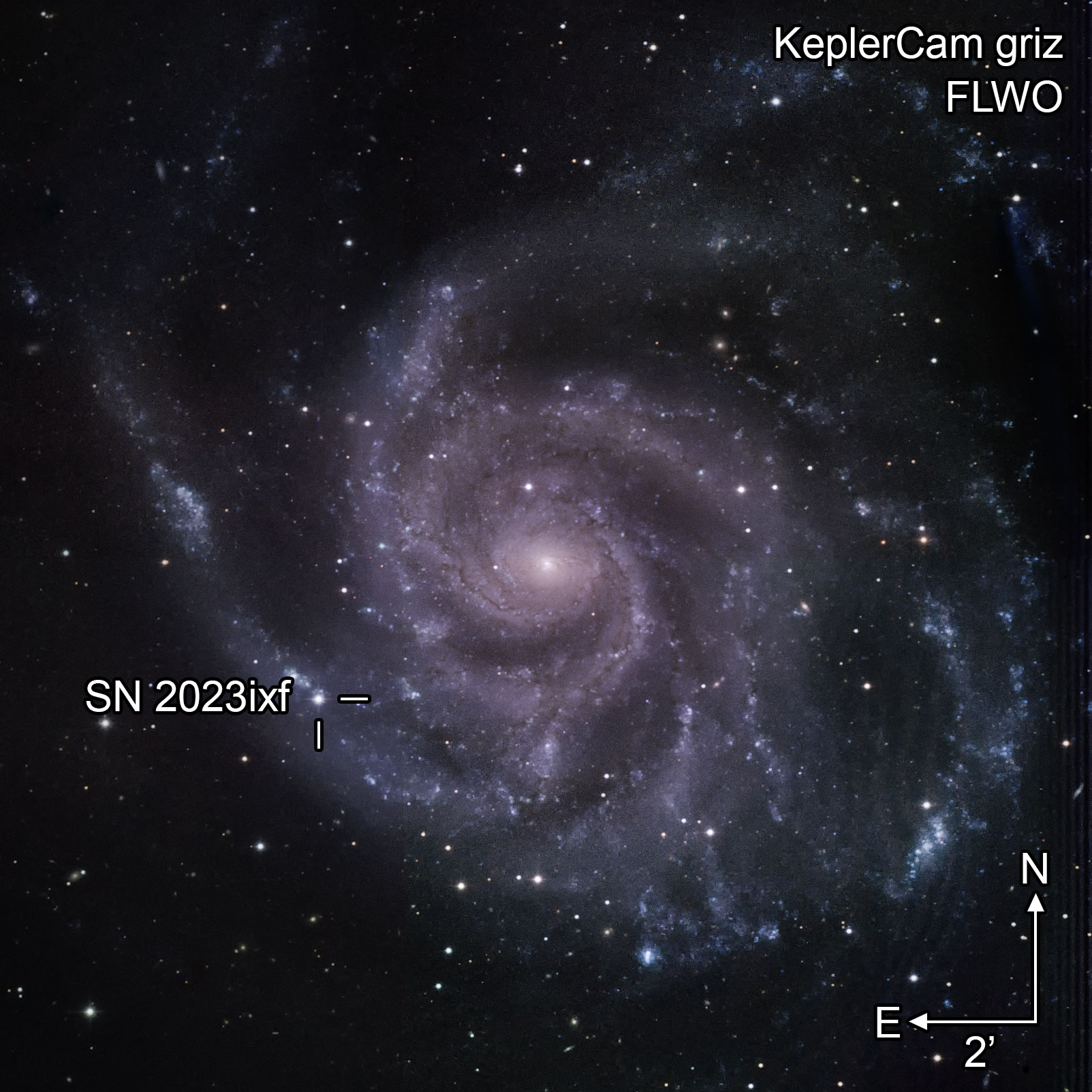The closest supernova to Earth in the last decade has provided astronomers with intriguing new insights into what happens to these stars just before they go boom. And it turns out that some of them lose a lot of weight in an incredibly brief window of time.
SN 2023ixf exploded in the Pinwheel galaxy, a spiral galaxy 21 million light-years from us. It was spotted by Japanese amateur astronomer Koichi Itagaki on May 19. Its relative proximity and quick detection allowed researchers to study it with incredible detail.
The progenitor star was about 25 times the mass of the Sun and underwent a Type II or core-collapse supernova. In these events, the supernova produces a flash of light when the explosion reaches the outer edge of the bloated star, something that happens pretty quickly.
For SN 2023ixf this instead took several days. Observations suggested that the explosion slammed into something massive around the star. Over the last 12 months before its demise, it had been releasing a huge amount of material – an atypical situation for Type II supernovae.
“The delayed shock breakout is direct evidence for the presence of dense material from recent mass loss,” Dr Daichi Hiramatsu, from the Center for Astrophysics | Harvard & Smithsonian, said in a statement. “Our new observations revealed a significant and unexpected amount of mass loss – close to the mass of the sun – in the final year prior to the explosion.”

Observations of the Pinwheel galaxy with the supernova clearly identified.
Image Credit: S. Gomez/STScI
The findings are very important because they allow astronomers to better understand the lead-up to the supernova. In the year before the explosion, the star is fusing heavier elements, and maybe this is related to the dramatic release of material.
Hiramatsu studied the event in visible light using multiple telescopes – but this team was not the only one looking up at the supernova. Another group looked at it in sub-millimeter wavelengths. A team using the CfA’s Submillimeter Array (SMA) on the summit of Maunakea, Hawai’i also began observing this event.
“SN 2023ixf exploded exactly at the right time,” added Professor Edo Berger. “Only a few days earlier we commenced a new ambitious three-year program to study supernova explosions with the SMA, and this nearby exciting supernova was our first target.”
“The only way to understand how massive stars behave in the final years of their lives up to the point of explosion is to discover supernovae when they are very young, and preferably nearby, and then to study them across multiple wavelengths,” Berger continued. “Using both optical and millimeter telescopes we effectively turned SN 2023ixf into a time machine to reconstruct what its progenitor star was doing up to the moment of its death.”
The discovery and a lot of the follow-up work on this event was possible thanks to the work of citizen scientists, breaking records on the number of amateurs all collecting data on the same event in the same way.
“The partnership between amateur and professional astronomers has a long-standing tradition of success in the supernova field,” said Hiramatsu. “In the case of SN 2023ixf, I received an urgent email from Kōichi Itagaki as soon as he discovered SN 2023ixf. Without this relationship, and Itagaki’s work and dedication, we would have missed the opportunity to gain critical understanding of the evolution of massive stars and their supernova explosions.”
The study led by Hiramatsu and the one led by Berger are both published in The Astrophysical Journal Letters.
Source Link: Heavy Star Underwent Dramatic Weight Loss Before Going Supernova